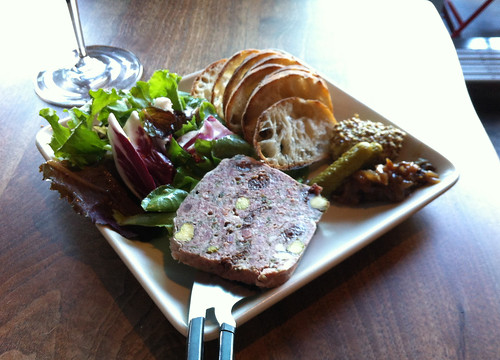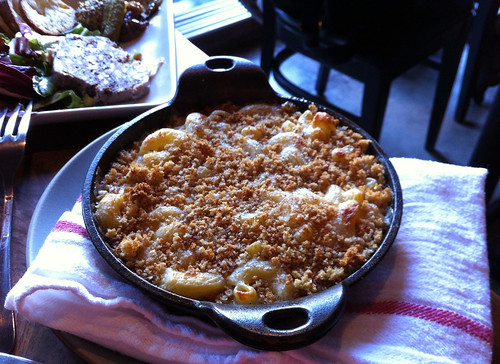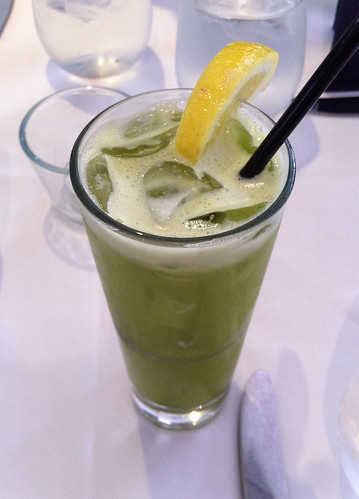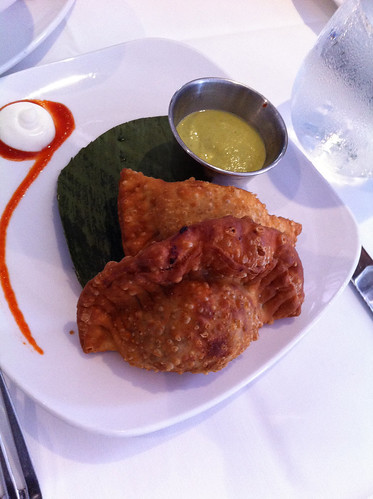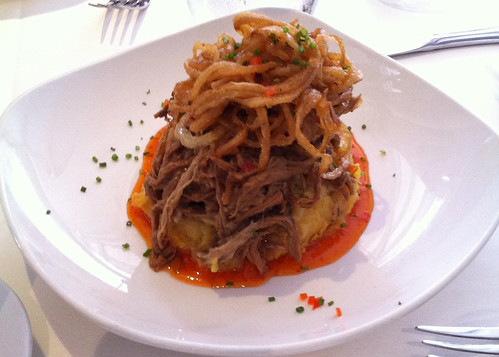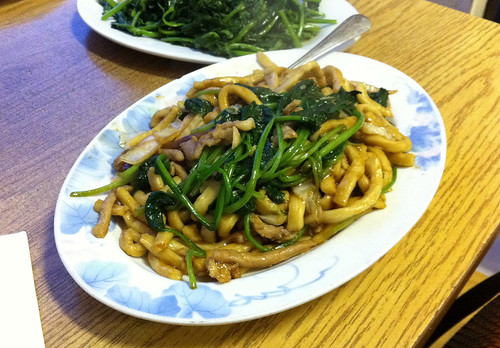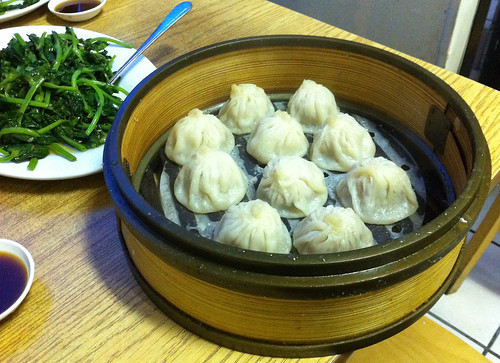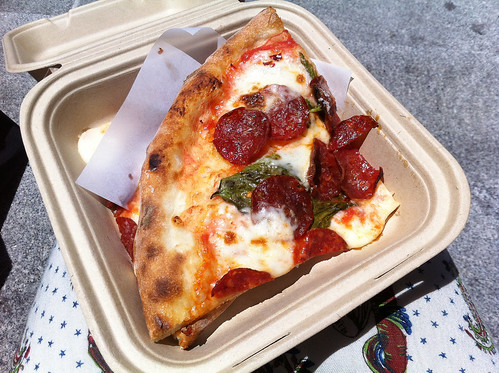Mission Cheese opened over a year ago, but I didn’t get around to visiting until this summer. I was suspicious — a restaurant dedicated to just cheese? Don’t get me wrong — you can’t really go wrong with cheese, but I was hesitant to make a full meal out of a menu dedicated to cheese, cheese, and more cheese. (Oh, and a bit of wine.)
I had dinner there one evening and started off with a cheese flight. I can’t recall which cheeses we ordered, but they were all delicious, and full of salty, creamy flavor. The selection changes daily and is categorized by (American) geographic region, and the staff is more than happy to guide you through the ordering process if you’re not sure what you want.
Next, we shared an order of Eric’s country pate. I don’t know who Eric is, but he makes some of the finest-tasting pate I’ve ever had. Duck confit and pork pate are mixed with cherries and pistachios for a crumbly, meaty, oh-so-rich texture that paired perfectly with cornichons and our glasses of pinot noir.
We rounded out our meal with a skillet of mac and cheese, topped with breadcrumbs and toasted just right. I’m not sure what kind of cheese they’re using here, as the menu attributes it to a secret recipe, but it’s definitely worth ordering again.
A couple caveats about Mission Cheese: they close at 8pm, so plan on an early evening of cheese and imbibing. And they’re located on a busy stretch of Valencia Street. Hipsters. Need I say more? Still, I’ll gladly tolerate ironic flannel for this cheese. Who knew one humble ingredient could go so far?


